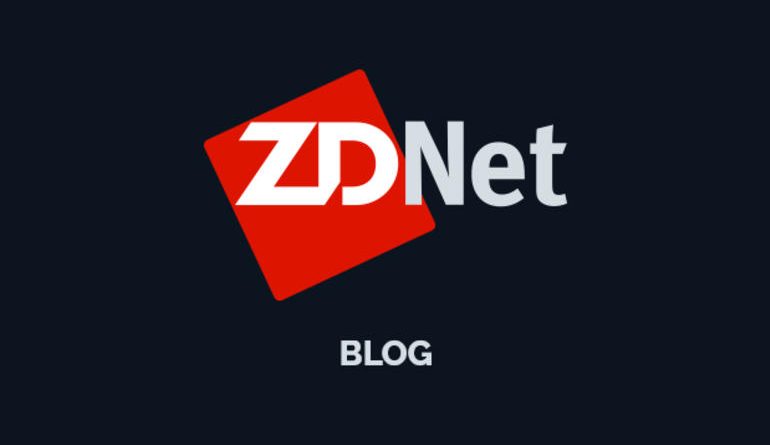Review: My Amazon Kindle Single publishing experiment
Amazon on Wednesday launched its Kindle Single store and my experiment in self-book publishing went along for the ride.
When Amazon announced its Kindle Single effort in October I saw a good opportunity for the e-tailer to spur a market for content. Amazon wrangles with publishers over pricing and the few books are exclusive to the Kindle platform. With the Kindle Single store, Amazon is calling on authors, domain experts and other folks to contribute. Meanwhile, Kindle singles are priced from 99 cents to $4.99, a range that encourages purchases.
 With that in mind, I decided to cook up a Kindle Single on a rant about The Business of Media that I frequently deliver at the office. The gist: Journalist types haven’t focused much on their business models. As a result, journalists don’t know their return on investment to their employers and leave themselves vulnerable. Just like technology managers, content folks have business alignment issues. At the very least, a little business model knowledge can prepare you for the day when you’re on your own. In the end, we’re all freelancers. We all publish or perish in the end.
With that in mind, I decided to cook up a Kindle Single on a rant about The Business of Media that I frequently deliver at the office. The gist: Journalist types haven’t focused much on their business models. As a result, journalists don’t know their return on investment to their employers and leave themselves vulnerable. Just like technology managers, content folks have business alignment issues. At the very least, a little business model knowledge can prepare you for the day when you’re on your own. In the end, we’re all freelancers. We all publish or perish in the end.
In addition, the Kindle Single pitch—pieces that are 10,000 to 30,000 words—fit in with my sweet spot. Frankly, I don’t have the patience or attention span for a book (at least for now) and dealing with publishers and agents. I took a class on writing children’s books and was struck how much focus was on finding an agent and landing a publisher. To me, it would make a lot more sense to find an illustrator and do an iPad app.
That’s what the Kindle Single effort represents. It’s going to be a bit wild west at first, but Amazon could foster a nice idea marketplace that can put you on multiple platforms. I could see IT experts using the Kindle Single platform as a way to outline everything from project management tips to best practices and market research. Here’s my experience with writing a Kindle Single.
The prep
Before the launch, Amazon was still formulating the Kindle Single approach as well as the launch date. The publishing platform was built on the same system that published standard e-books so Amazon didn’t have to do a lot of heavy lifting from the IT perspective.
For me, it began with your standard story or book pitch. It’s an introduction excerpt and a chapter outline.
Once accepted, it was just a case of writing the book and submitting. The actual file you submit is basically an HTML document that is converted to Amazon’s proprietary format.
Why do an Amazon Kindle book? What appealed to me most about Amazon as a platform is that the process was simple and your work would wind up on multiple devices. The Kindle secret sauce isn’t the e-reading device—it’s the ability to take your content to the iPad, iPhone, Android device, PC, Mac or anywhere else. I’m not a developer and need to hit the broadest point possible.
The publishing process
If you have an Amazon account, you can publish a book.
Until a few days ago, the Kindle publishing system was dubbed the Digital Text Platform. Today, it’s known as the Kindle Direct Publishing Platform.


Among the key items to know about the Kindle Direct Publishing Platform:
- Royalty rates. Amazon used to give the 70 percent royalty option for books priced between $2.99 and $9.99. Amazon changed that royalty option so the 70 percent of revenue is available for books priced between 99 cents and $4.99.
- Book basics are simple. Things like book title, description and publishing rights are straightforward.
- Keywords, categories and descriptions need more work. The hardest part of the process for me was finding categories for the e-book and writing the description, which is basically your pitch to sell your work.
- Acquiring cover art. You need permission to use just about any image. I went with a tag cloud that I generated under a Creative Commons license. Since I generated that tag cloud for commercial use, I paid $19.99 for the license.
- You have a choice on using Digital Rights Management. I enabled it, so sue me. Note once you choose to use DRM for a title you can’t go back. Frankly, I didn’t give it much thought. I will note that your attitude toward DRM changes a bit when you’re the one doing the publishing.
The pricing
One of the more complicating items with the Kindle Single experiment was pricing. Amazon gave me a range of a 99 cent to $4.99 for a Kindle Single.
Given that range and about 30 seconds of price sensitivity analysis, I went with the middle of Amazon’s range. I’d love to tell you there was some science, but I see a case of trial and error. Publishers can also change the list price so I’ll experiment with it for giggles.
The other item to ponder is Amazon’s royalty rate and figuring out distribution charges. I went for the 70 percent royalty rate, but there are situations where the 35 percent rate may make sense. Here’s a screen on the royalty option.


As you can see, there are delivery costs. These costs are based on the size of file and assessed by unit. Delivery costs could theoretically eat into your royalty rate if you sell enough units.
From the FAQ:
iii. The Delivery Costs for a Digital Book will be equal to the number of megabytes we determine your Digital Book file contains, once uploaded by you and converted by us into our then-current Digital Book format, multiplied by the Delivery Cost rate listed in the table below. One megabyte, equals 1024 kilobytes. One kilobyte equals 1024 bytes. We will round file sizes up to the nearest kilobyte. The minimum Delivery Cost for a Digital Book will be US$0.01 for sales in US Dollars and £0.01 for sales in GB Pounds, regardless of file size.
iv. Example: For a US Dollar sale, if your Digital Book has a file size of 0.400 megabytes and a List Price of $8.99, and we sell your Digital Book at the List Price, the Delivery Cost for a sale in US Dollars will be $0.06 (0.400 MB x $0.15 = $0.06), and your Royalty will be $6.25 (($8.99 – $0.06) x 70% = $6.25).
If you sell to various markets—my book is in the U.S. and U.K. Kindle stores—the dynamics can change a bit. Amazon spends a good bit of time talking about the Value Added Tax in Luxembourg—something that isn’t exactly dinner conversation.
My return on investment
Will this book fund my retirement? Probably not. My personal ROI went like this:
- Publish something that could be adapted to be a syllabus someday.
- Make a few folks in the field think a bit.
- Surface a key issue that isn’t being taught much at journalism schools.
If there’s some revenue that goes along with the e-book that’s fine, but the broader picture is that The Business of Media provided a nice introduction to micropublishing and micropayments. I think there’s a future—and potentially a living—here. I’ll experiment with the pricing, update the book as needed and plot my next one. With any luck Amazon’s platform will improve to the point where children’s books complete with illustrations reach multiple devices. Today, the only viable option for a kids book would be the iPad—a process I’m going to explore.


